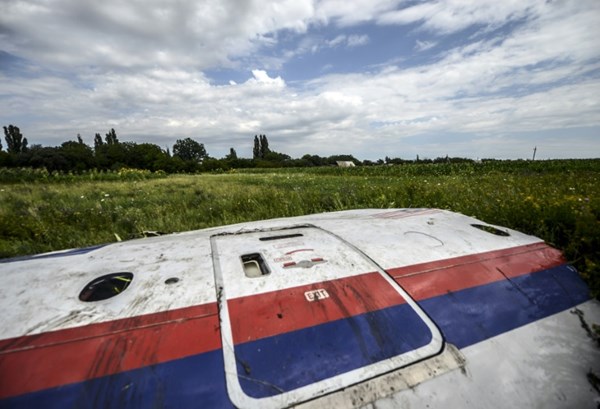Dutch prosecutor's office provides new evidence in MH17 case
The Dutch prosecutor's office, during the court hearings in the case of the downing of Boeing MH17 plane over the Donbas in 2014, presented new recordings of telephone conversations that prove that the airliner was shot down by a Buk missile system.
According to the Dutch news agency NRC, the recordings of the militants’ conversation, which were presented during the proceedings, are the most concrete evidence against the four defendants.
According to the intercepted phone conversations, shortly after the crash, the defendants in the case reported by phone that their Buk unit had downed the plane. At the same time, they believed that they shot down a Ukrainian military plane.
In particular, on July 17, 2014, at 4:48 p.m., a few minutes after the crash, militant Leonid Kharchenko called one of the ringleaders, Sergei Dubinsky.
"We're here. We have already shot down Sushka (Ukrainian Su fighter)," Kharchenko said.
In the evening at 19:52 Dubinsky called Oleg Pulatov asking to clarify whether Buk missile was in the area of the crash.
"Buk struck Sushka after Sushka had struck the Boeing," Pulatov reported.
Dubinsky gave the same explanation to the so-called "DPR Defense Minister" Igor Girkin.
“Sushka (Ukrainian Su fighter) hit the Boeing, and after that we shot it down with our Buk. Good news, right, Igor?" he asked.
"I don't know, I honestly don't believe it," Girkin told him.
"We will still be accused of shooting it down, if you know what I mean," Dubinsky added.
NRC clarifies that the Dutch prosecutor's office provided the new recordings in response to requests of Oleg Pulatov's lawyers last week.
On June 22, the court hearings into the downing of the Malaysia Airlines flight MH17 over the Donbas, resumed in The Hague.
The previous stage of the hearings was held from June 8 to June 10. The parties reported on the work done and the information collected.
Three Russian citizens, Sergei Dubinsky, Igor Girkin and Oleg Pulatov, as well as Ukrainian citizen Leonid Kharchenko have the status of the accused. They were also absent during the first meeting in March.
Pulatov is represented in the trial by a team of lawyers, two of them are at the meeting today.
The judge noted that the case would be heard in the absence of the accused and all the data presented would apply to all four unless otherwise stated separately.
The court was presented with photos from U.S. satellites, which show the Buk missile. The U.S. military did not provide the photos in their original form to the public, but they allowed the Dutch representative to study the sources, and a memorandum will be attached to the case file (where copies of the images are likely to be copied in a smaller resolution).
On July 17, 2014, a Malaysia Airlines Boeing 777 flying from Amsterdam to Kuala Lumpur was shot down near the city of Shakhtarsk in Ukraine’s Donetsk region. All crew members and passengers were killed, a total of 298 people, including 80 children.
At a press conference in The Hague in May 2018, nearly four years later, the JIT presented fragments of the missile used to shoot down the plane. The Buk system from which the missile was fired belonged to the 53rd anti-air missile brigade of the Russian Armed Forces, which is based in Kursk.
In June 2019, the JIT released the names of four suspects in the MH17 case: The three Russian citizens Sergey “Gloomy” Dubinsky, Oleg “Caliph” Pulatov and Igor “Strelkov” Girkin, and the Ukrainian citizen Leonid “Mole” Kharchenko. Former DPR militant Vladimir Tsemakh was later also declared a suspect, but Ukraine handed him over to Russia as part of a prisoner exchange.
The Security Service of Ukraine (SBU) announced that the defendants are suspected of committing “a terrorist act which lead to human deaths”.
After five years of investigation, the JIT has established the exact time and route taken by the Buk anti-air missile system from Russia to Ukraine and back, the time and place where the fatal missile was fired, and obtained information about more than 150 people who were involved in the transportation of the Buk.
